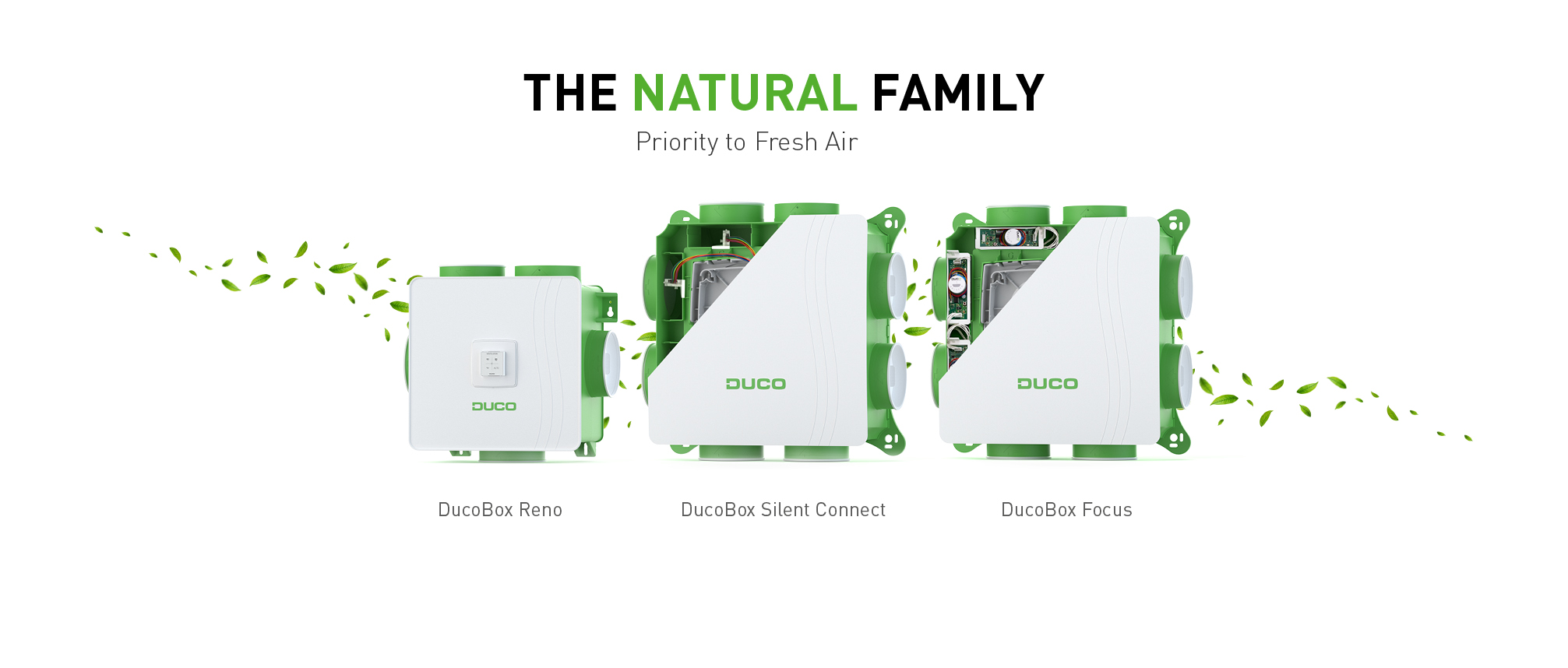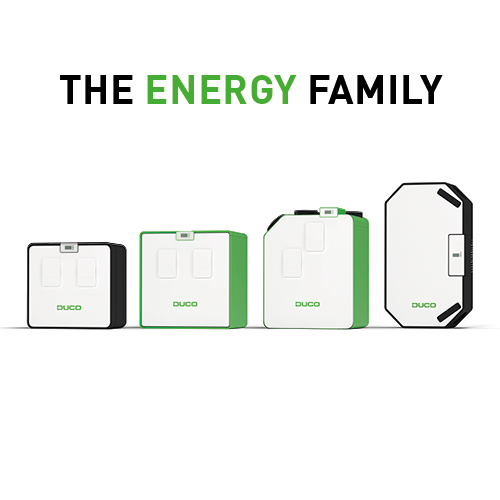Condensation in well-insulated homes: an underestimated problem
638942216879350592.png?width=&height=&mode=crop)
Modern homes are increasingly well-insulated, yet paradoxically suffer more often from moisture problems. Discover why proper ventilation is crucial for a healthy indoor climate and which solutions best suit your situation.
The construction sector is evolving at breakneck speed. We're insulating better, building more airtight structures and striving for maximum energy efficiency. New-build homes increasingly comply with strict regulations, which is excellent news for your energy bills and the environment. But an unexpected problem is creeping in: more and more residents of modern, well-insulated homes are struggling with moisture problems, condensation and stale air. How is this possible?
When insulation becomes a pitfall
A well-insulated home keeps heat perfectly inside - but also keeps all the moisture that you and your family produce daily trapped within. And that's more than you might think.
Every day you unconsciously create large quantities of water vapour: through breathing, cooking, showering, washing, drying clothes and even through your plants and pets. In less well-insulated homes, this moisture naturally escapes through natural ventilation via cracks and gaps. But in airtight homes, all that moisture remains trapped.
The result? Humidity rises, and when that warm, moist air meets cold surfaces -- such as windows, external walls or thermal bridges -- condensation forms. You'll recognise it immediately: water droplets on your windows, a fogged-up mirror that won't clear, or damp patches in room corners.
The hidden dangers of prolonged condensation
What begins as a few water droplets on your window can develop into a serious problem for your home and your health:
Mould formation and health problems
Moulds thrive in humid environments and readily establish themselves in poorly ventilated corners, behind cupboards or on ceilings. These moulds release spores that can cause allergic reactions, worsen asthma and in sensitive individuals even lead to more serious breathing problems. Children and elderly people are particularly vulnerable.
Structural damage to your home
Prolonged moisture attacks materials. Plasterwork discolours and flakes off, paint layers come loose, and in the worst case, wood rot can develop in load-bearing structures. This damage is not only expensive to repair, but can also compromise your home's structural integrity.
Comfort and quality of life
A damp home feels stuffy, smells musty and creates an uncomfortable living environment. Air quality deteriorates noticeably, making you feel less energetic and sleep poorly. Moreover, the moisture problem can increase your energy consumption, as humid air is more difficult to heat.
Depreciation of your property
Moisture problems can significantly reduce your home's value. Potential buyers are put off by visible moisture damage or musty odours, and thorough restoration can prove costly.
Ventilation: from luxury to life necessity
Here lies the heart of the problem: we assumed for too long that good insulation automatically guaranteed a comfortable and healthy home. But insulation without adequate ventilation is asking for trouble.
In modern, airtight homes, ventilation is no longer an optional extra -- it's an essential component of a healthy housing system. Yet ventilation is often overlooked, as budgets go towards visible elements like solar panels or underfloor heating.
The solution: choosing the right ventilation strategy
Fortunately, efficient solutions exist that tackle the moisture problem without compromising your energy performance. You have two main options: mechanical extract ventilation (MEV) and mechanical ventilation with heat recovery (MVHR). Both have their own advantages and applications.
Mechanical extract ventilation: efficient and budget-friendly
Mechanical extract ventilation works on the principle of controlled extraction of moist air from wet rooms (bathroom, kitchen, WC) whilst fresh outside air enters through ventilation grilles in dry rooms (bedrooms, living room).
Advantages:
- Budget-friendly solution
- Relatively simple installation
- Compact system that takes up little space
- Good control over moisture and odours
- Low maintenance costs
Disadvanages:
- Dependent on natural supply via grilles
- No heat recovery, so slightly higher energy consumption
For mechanical extract ventilation, you can turn to The Natural Family from DUCO - a range specially developed for efficient, controlled ventilation.

Mechanical Ventilation with Heat Recovery (MVHR): the premium solution
Mechanical ventilation with heat recovery works entirely mechanically: both supply and extraction occur via the ventilation system. The major advantage is heat recovery: the heat from the extracted indoor air is used to preheat the cold outside air.
Advantages:
- No ventilation grilles needed in the façade
- Heat recovery up to 90 % possible
- Complete control over air quality
- Filtered outside air (fewer pollens, fine dust)
- Ideal for passive houses
- No cold draughts due to controlled air temperature
Disadvantages:
- Higher purchase price
- More complex installation
- More maintenance work (filter replacement)
- More space needed for the installation
For MVHR, The Energy Family from DUCO offers excellent solutions that perfectly align with the requirements of modern, energy-efficient homes.

Not 'either-or' but 'what suits your situation'
The choice between mechanical extract ventilation and mechanical ventilation with heat recovery depends on various factors:
Choose MEV if:
- Your budget is limited
- You already have ventilation grilles in your home
- You're renovating an existing home
- Your energy consumption for ventilation is less critical
Choose MVHR if:
- You don't want or cannot install ventilation grilles
- You're aiming for maximum energy efficiency
- You're building to Passivhaus standard
- You want the best air quality (filtered air)
- Your budget allows investment in premium comfort
The right partner for your ventilation challenge
At DUCO, we understand that every housing situation is unique. That's why we offer both mechanical extract ventilation solutions (The Natural Family) and mechanical ventilation with heat recovery (The Energy Family).
Whether you choose the budget-friendly efficiency of mechanical extract ventilation or the premium performance of mechanical ventilation with heat recovery - both solutions ensure a healthy indoor climate without condensation problems.
Want to know which ventilation strategy best suits your home and budget? Discover our complete range of ventilation solutions and accessories such as air ducts and valves here and get advice from our experts. Because a healthy home starts with proper ventilation.